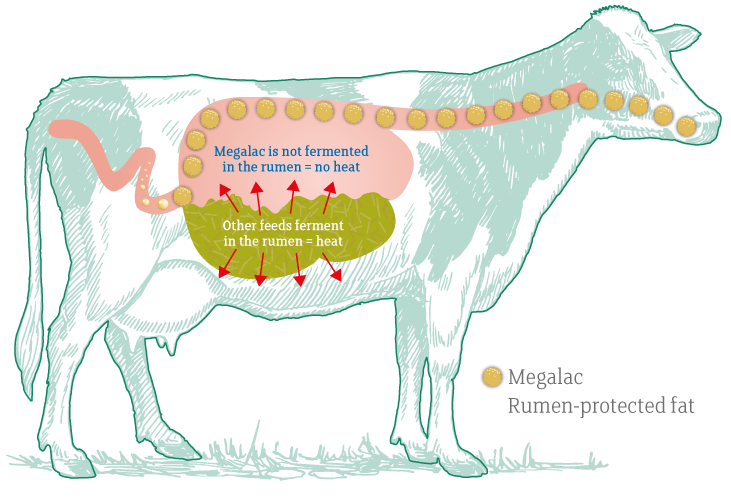Heat stress - benefits of fat
Fat is commonly added to diets to help combat heat stress which can cause major reductions in dry matter intake, production and fertility. The physical and chemical processes associated with digestion and metabolism of feeds leads to production of heat in the animal. However, fats are not fermented in the rumen, thereby avoiding heat produced due to fermentation of feeds. Fats are also more efficiently converted to energy than other nutrients so minimising metabolic heat production. As a result, increasing dietary fat can reduce ‘internal’ heat production and help to ‘cool’ the animal compared to energy from other nutrient sources (Figure 1).
 Figure 1 Dietary fats reduce 'internal' heat production
Figure 1 Dietary fats reduce 'internal' heat production
Research work has determined the net energy value of lactation (NEL) of Megalac rumen-protected fat to be 27.3 MJ/kg DM based on in vivo studies with dairy cows. This indicates that metabolisable energy (ME) in Megalac is converted to NEL with similar efficiency to that generally accepted for utilisation of mobilised body energy in lactating cows (82%). This is substantially above the typical efficiency of energy use of common diets (around 64%), such that heat production associated with digestion and metabolism of Megalac is considerably less than with other dietary ingredients – inefficiencies in energy utilisation result in production of heat.
The higher ME values of fat enables high energy density diets to be formulated to help ensure energy supply is increased even when total dry matter intake is low, thereby helping to improve the energy status of the animal. Furthermore, fats do not add to the acid load in the rumen so is a ‘safe’ ingredient under heat stress conditions where acidosis is a particular risk.